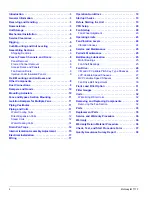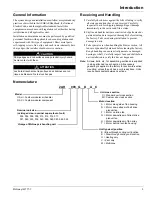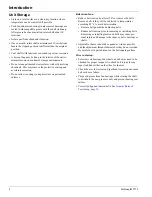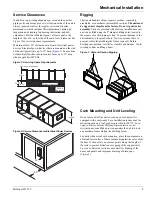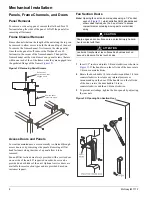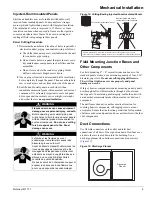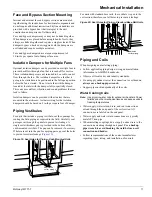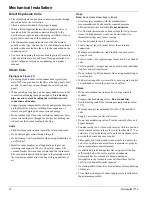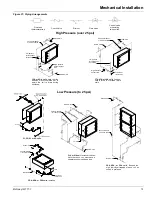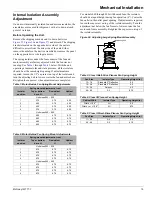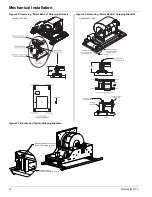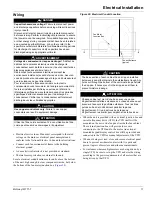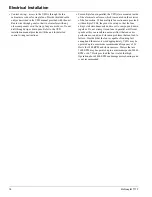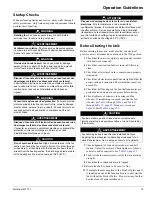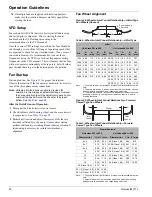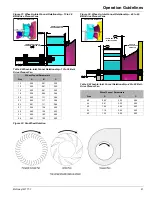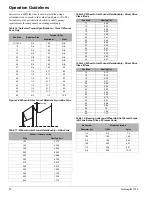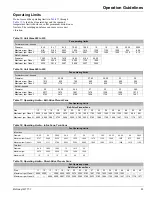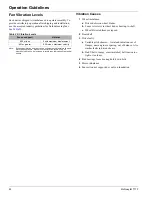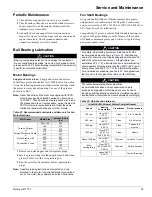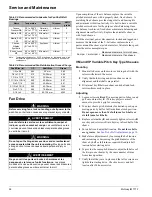
McQuay IM 777-7
11
Mechanical Installation
Face and Bypass Section Mounting
Internal and external face and bypass sections are mounted
together using the instructions for horizontal components and
do not require additional instruction. Skyline air handlers are
provided with a bypass duct that is integral to the unit
construction and requires no field assembly.
Face and bypass dampers may or may not be linked together.
When dampers are placed before a single bank of coils, they
always are linked together and require a single actuator. When
dampers bypass a stacked or staggered coil, the dampers are
not linked and require multiple actuators.
Face and bypass dampers have a torque requirement of
10 in-lbs per square foot of damper face area.
Isolation Dampers for Multiple Fans
Optional isolation dampers can be provided on multiple fans to
prevent backflow through a fan that is turned off for service.
These isolation dampers are not intended to be used to control
flow through the fan. The isolation damper for a fan that is
going to be started must be positioned in the full open position
before the fan is started. Do not start a fan with the damper
located at the inlet with the damper fully or partially closed.
This can cause airflow, vibration, and sound problems that can
lead to failure.
Isolation dampers can be provided with actuators that are
mounted in the airstream. Actuator sizing for the isolation
dampers should be based on 9 in-lb per square foot of damper.
Piping Vestibules
For units that include a piping vestibule, cut the openings for
routing the field piping as required in the field. Carefully seal
passages cut through the panels to prevent air leakage. A
single metal thickness pan is provided in the bottom of the
curb-mounted vestibule. The pan can be removed if necessary.
If holes are cut into the pan for a piping passage, seal the holes
to prevent moisture leakage (
Figure 19
).
Figure 19: Seal Holes for Piping—Curb Mounted Units
For units with standard base rails, the vestibule is open to the
coil section; therefore, seal all holes to prevent air leakage.
Figure 20: Seal Holes for Piping—Standard Base Rail Units
Piping and Coils
When designing and installing piping:
•
Follow applicable piping design, sizing, and installation
information in ASHRAE handbooks.
•
Observe all local codes and industry standards.
•
Do not apply undue stress at the connection to coil headers;
always use a backup pipe wrench
.
•
Support pipework independently of the coils.
Water Cooling Coils
Note:
Use glycol in water coils for outdoor air handlers. Power
failures and other mechanical issues can expose coils to
freezing temperatures.
•
Water supply, water return, drain, and vent connections
extend through the end panel of the coil section. All
connections are labeled on the end panel.
•
Water supply and water return connections are typically
male NPT iron pipe.
•
When installing couplings, do not apply undue stress to the
connection extending through unit panel.
Use a backup
pipe wrench to avoid breaking the weld between coil
connection and header.
•
Follow recommendations of the control manufacturer
regarding types, sizing, and installation of controls.
Seal holes
cut for piping
Seal holes
cut for piping


